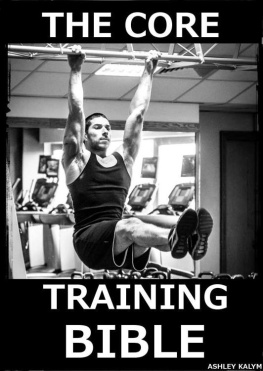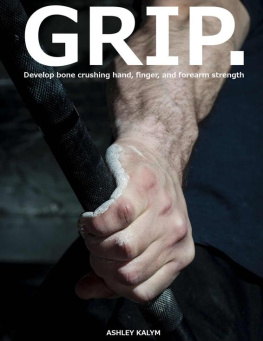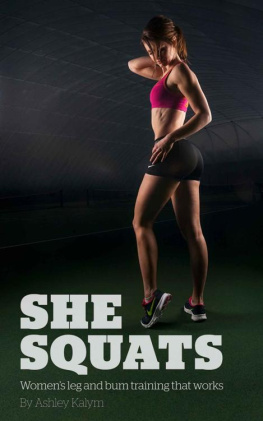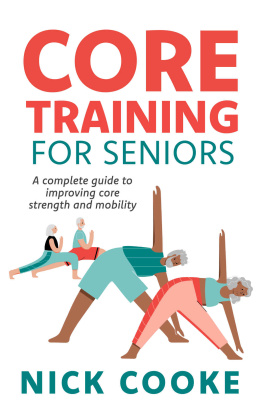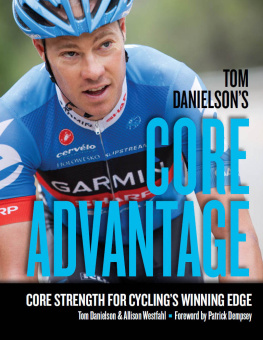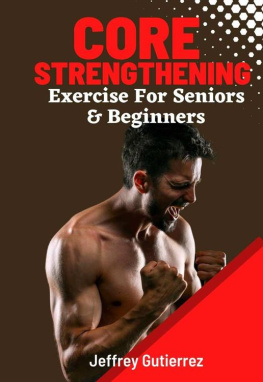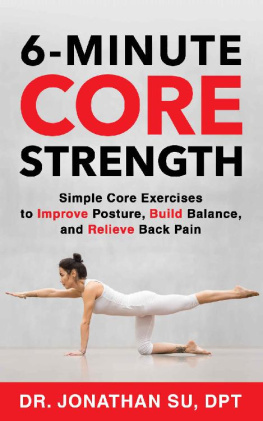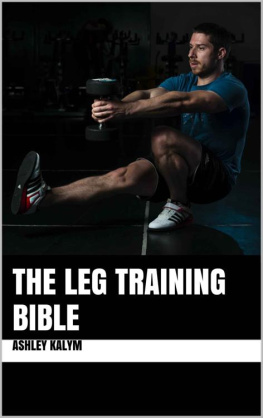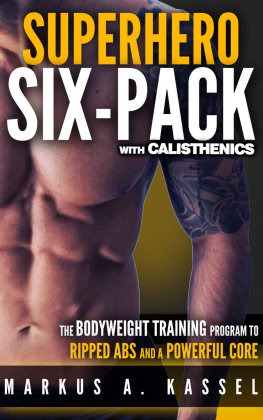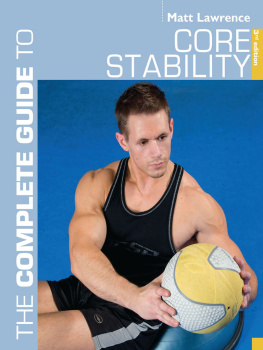Kalym - The Core Training Bible
Here you can read online Kalym - The Core Training Bible full text of the book (entire story) in english for free. Download pdf and epub, get meaning, cover and reviews about this ebook. year: 2012, genre: Science. Description of the work, (preface) as well as reviews are available. Best literature library LitArk.com created for fans of good reading and offers a wide selection of genres:
Romance novel
Science fiction
Adventure
Detective
Science
History
Home and family
Prose
Art
Politics
Computer
Non-fiction
Religion
Business
Children
Humor
Choose a favorite category and find really read worthwhile books. Enjoy immersion in the world of imagination, feel the emotions of the characters or learn something new for yourself, make an fascinating discovery.
The Core Training Bible: summary, description and annotation
We offer to read an annotation, description, summary or preface (depends on what the author of the book "The Core Training Bible" wrote himself). If you haven't found the necessary information about the book — write in the comments, we will try to find it.
Kalym: author's other books
Who wrote The Core Training Bible? Find out the surname, the name of the author of the book and a list of all author's works by series.
The Core Training Bible — read online for free the complete book (whole text) full work
Below is the text of the book, divided by pages. System saving the place of the last page read, allows you to conveniently read the book "The Core Training Bible" online for free, without having to search again every time where you left off. Put a bookmark, and you can go to the page where you finished reading at any time.
Font size:
Interval:
Bookmark:
The Core Training Bible
We all know how important it is to train your core, not only for sports and athletic pursuits, but for everyday life as well. The Core Training Bible shows you how to develop huge core strength and stability, so that you are ready for whatever life throws at you!
Copyright 2012 Ashley Kalym
All rights reserved. No portion of this book, whether in print or electronic format, may be duplicated or transmitted without written permission of the publisher, except where permitted by law.
Hello, and welcome to The Core Training Bible. My aim in writing this book was to get more people training their core, using simple exercises that require little to no equipment. Many of the exercises featured in this book are underused, unknown, or have never even been considered as useful by the general population.
Before jumping straight in and starting your core training, it is important to understand a few principles around core training in general.
In the introduction we will look at the background and recent interest in core training that has expanded in the last few years.
We will look at the reasons why training the core is so important, not just for athletes and sportsmen, but for everyday situations and life in general.
We will examine the principles behind the exercises I have included in this book, and the reasons why these principles will help you to develop massive core strength and stability.
I will also explain why doing thousands of sit-ups is not the best way to get a six-pack, and why this method will never work.
In the final section of PART I we will look at pieces of equipment that can enhance and improve your training experience.
In recent years there has been a massive interest in core training and core stability, and with it a plethora of information, gadgets, ideas, and other factors that have affected the way that people train their cores. Whilst some of this is positive and has helped to get people thinking about different ways to train the core, there are many exercises and methods that are much more effective, yet are almost completely unknown, outside of perhaps the gymnastics and climbing community. My goal is to share these methods with you, so that you can train your core to be as strong as humanly possible.
Today, there is no athlete on the planet that can approach the level of core strength that is enjoyed by top-level gymnasts. Their sport requires them to move their body through space in tucked, extended, and unnatural positions, including static holds and mechanically disadvantaged positions. Most of the exercises used stay behind closed doors, and many gymnastics coaches do not like or have any need or desire to share their methods. In addition, most strength and conditioning coaches will probably not even give gymnastics a second thought when it comes to building strength and athletic ability. In my opinion this is a huge mistake!
Most fitness professionals these days like to preach about core stability and core strength, but nearly all promote this with full body movements and very little direct core work. Those that do promote direct core work no doubt use simple exercises such as the crunch, sit-up, and various stability ball exercises. These are adequate when training for the first time, but fall far short of the level of strength we want to build. To strengthen the core we need to expose it to maximal contraction and lots of disadvantaged lever work.
They core is responsible for nearly all stabilization, and every movement that the body makes has it's basis in a solid foundation from the core. The muscles of the core fire 40 to 50 milliseconds before the actual movement (be that a punch, kick, or jump), take place. This is so that the arm, leg, or other body part has a solid foundation on which to anchor the movement. If your core is not very strong, or is not as strong as it could be, then it doesn't matter how strong the other body parts are; you will always be at a distinct disadvantage to someone who has greater core strength. As the saying goes, "you cannot fire a cannon from a canoe".
In daily life the core muscles are involved in supporting the trunk of the body, and are vital for developing and maintaining good posture. If you are one of the many hundreds of thousands of people who work in an office, then I am sure that you spend a good deal of your day in a sitting position. Even if you have a slightly more active job, the chances are that you will drive to work, and with the average commute time in many countries being close to an hour, that is a lot of time for your spine and other systems to get into bad habits. A strong core can help to eliminate many of the posture problems that are seen in many people in our modern world.
In the sporting arena, core strength is one of the most important, yet most overlooked components in many peoples training regime. If you took two opposing athletes, both of whom weighed the same, both of whom had the same level of skill and experience, it would undoubtedly be the person with the greater core strength who would come out on top. This is especially true of those athletes who take part in combat and contact sports, such as mixed martial arts, rugby, football, basketball, etc. If you take part in any sports then you will find plenty of unique and challenging exercises in this book that will help you in your sporting performance.
Whenever any exercise is performed for the upper or lower body, range of motion is always emphasised. I am sure many of you have been told to squat lower, or straighten the arms at the bottom of a pull-up. There is a good reason for this, as working the muscles through their full range of motion will build more strength and athletic ability, and decrease the risk of injury. So, if range of motion is so important, why does the majority of core training these days take place with the body in a flexed, or hunched over position?
This is the exact opposite of how upper body and lower body training is taught. We need to take a step back and identify better methods of training for the core. In my opinion, this starts with understanding the principle of reduced leverage. Leverage is simply the ease that an object of a certain length is able to exert force. A shorter lever will have to exert more force to move a weight, as opposed to a longer lever moving the same weight. This is why top-level gymnasts always tend to be shorter. Their shorter levers enable them to hold positions like the crucifix or iron-cross easier than their taller counterparts.
Contracting a muscle from its full extension will obviously build more strength, as more force will have to be applied to complete the movement. Following this logic, it makes sense that to build real core strength we must do the same with exercises that involve the torso.
This is the reason that many of the harder exercises in this book will take place with the body in a stretched out position, or with some of the bodys weight far away from the centre of the torso. This reduces the leverage that your body will be able to exert on the exercise, making the exercise more challenging, and building more strength and stability.
People with six packs and toned and ripped physiques have one thing that other people do not, and that is a low level or percentage of body fat. I will say this now:
Doing thousands of sit-ups a day will not burn fat off your stomach, and it will not give you a six-pack!
This myth is known as "spot reducing", the theory that doing lots of exercise on a specific body part will burn fat from only that area. For example, sit-ups to burn fat from the stomach, or side crunches to burn fat from the hips. The body simply does not work this way. It will burn fat and use energy from fat stores all over the body, and nothing that you do will change this fact.
Next pageFont size:
Interval:
Bookmark:
Similar books «The Core Training Bible»
Look at similar books to The Core Training Bible. We have selected literature similar in name and meaning in the hope of providing readers with more options to find new, interesting, not yet read works.
Discussion, reviews of the book The Core Training Bible and just readers' own opinions. Leave your comments, write what you think about the work, its meaning or the main characters. Specify what exactly you liked and what you didn't like, and why you think so.

